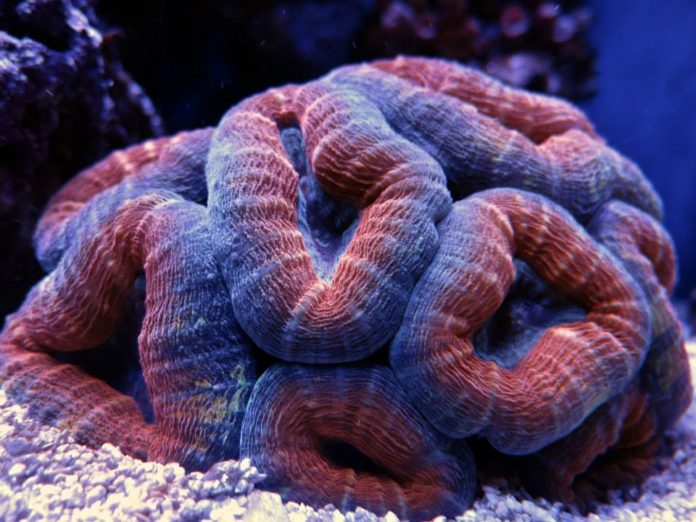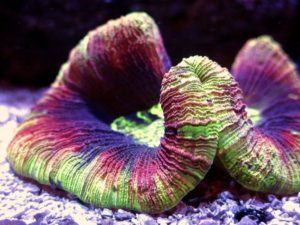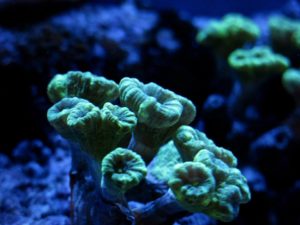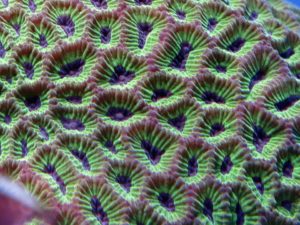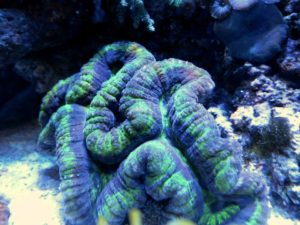Top 10 LPS Coral For Beginners
by: Kymmie Krieger
A well-maintained saltwater tank offers an amazing myriad of colors, textures, fish, plants, and corals. Nothing you can bring into your home can seem so alive as a well-cared for saltwater tank. Learning to care for this miniature living, breathing ecosystem can be incredibly rewarding, but it takes a lot more work than most beginners realize. For these reasons, most experts advise beginners to start off with some of the “easier to keep alive” coral as they “learn the ropes” of saltwater habitat maintenance. The species listed below can withstand a few mistakes and are easier to care for than many of their pickier cousins.
Why Choose Large Polyp Stony Corals?
There are several reasons why large polyp stony corals (LPS) make the best choice for beginners. LPS corals require a lower level of light, which can help reduce initial startup costs. LPS frags also tend to fragment and breed more successfully in captivity. And while they are not particularly easy to care for, they require less routine maintenance than their smaller cousins.
1) The Brain Coral (Trachyphyllia sp.)
The “Trach” is semi-aggressive and may attack fish and other invertebrates. It likes to live on the bottom of the aquarium where the water flows at a medium pace. A good basic saltwater tank with moderate lighting should be sufficient. Sweeper tentacles extend at night to feed and as such you should leave a wide empty space around it. Food includes chopped brine shrimp, micro-plankton, and Mysis shrimp.
related: Brain Coral, Trachyphyllia care
2) Pagoda Cup Coral (Turbinaria peltata)
The pagoda cup coral tends to be green in color and as the name suggests, looks a lot like a pagoda cup. Although it is a peaceful species that prefers to live at the bottom of the aquarium, you should give it plenty of room because it will grow quickly. If you want your coral cups to thrive, you will need to add calcium, strontium, and several other trace elements to your water. The coral cup will thrive on a diet of brine shrimp and plankton.
3) Candy Cane Coral (Caulastrea furcata)
While not as bright as some of the other popular species, it does come in colors that range from tan to a pale orange. The colors tend to vary based on what part of the world they come from. Candy cane coral is mostly a peaceful species, but you should watch its behavior to ensure it stays this way. You can place this coral at any level in your aquarium. Feed the Candy Cane a diet of brine shrimp and micro-plankton on a weekly basis.
4) Button Coral (Cynarina sp.)
The button coral has a reputation for being one of the more peaceful species around fish and other invertebrates. This small round coral offers brightly colored variations of purple, blue, and red. It prefers to live between the middle of your aquarium and the bottom with medium lighting and low water flow. As with most species, the button will double in size eventually, so be sure you provide it with plenty of room. You can feed it micro-plankton or brine shrimp at night.
5) Trumpet Coral (Caulastrea curvata)
The trumpet coral is a peaceful species that prefers the lower half of your aquarium. It does need moderate light and medium water flow and has a central base from which a skeleton expands with trumpet shaped polyps at the ends. It is sensitive to metal halide lighting, so you will need to slowly acclimatize it if you are using this type of light. Diet includes chopped zooplankton and baby brine shrimp.
6) Fox Coral (Nemenzophyllia turbida)
This species offers a spectacular display of pale pink creatures with dozens of folds in their bodies. The fox coral is a very peaceful species that prefers to dwell on the bottom of the aquarium in low to moderate light and water flow. During the day, the polyps will extend up to three times the size of the skeleton. Weekly feedings should include brine shrimp and microplankton.
7) Bubble Coral (Plerogyra sp.)
While bubble coral might appear to be soft and gentle, this is one of the more aggressive species of LPS corals. When you first look at it, you might think it looks like a bunch of grapes. You should place Bubble’s in the lower half of your aquarium where it will not be able to attack any other species with its sweeper tentacles. Diet should include micro-plankton and brine shrimp.
8) Brain Coral (Favites spp.)
This is another species referred to as brain coral and one that is unlikely to cause any problems if you give it plenty of space in your aquarium. It will thrive on any level and likes moderate water flow and lighting. They are the most common coral found in the world and come in a wide range of colors and sub-species. These little wonders can be fed micro-plankton and brine shrimp in the evening when their tentacles are visible.
9) Short Tentacle Plate Coral (Fungia Repanda)
This is one of the more unusual species in that it tends to be round and flat with hair-like tentacles. This species tends to be semi-aggressive towards fish and other invertebrates. It likes to live at the bottom of your aquarium in low to medium water flow and moderate light. Feed when its polyps are open on a diet of brine or Mysis shrimp several times per week.
10) Brain Coral (Lobophyllia sp.)
Here we have yet another brain coral, but this one tends to be somewhat aggressive in nature. It is typically bright orange in color and prefers to live closer to the top of your aquarium. It requires moderate to high levels of lighting but is comfortable living at any level, provided it gets enough light. Like most other forms of beginner LPS, you can feed this one on brine shrimp and micro-plankton.
Food for Thought
While the wonder and beautiful colors may be enticing, before you introduce any type of coral into your aquarium, it needs to be well-established. You may find you need to make several adjustments to water flow, turgor, and quality once you add your coral. Keep a close eye on them until they begin to colonize to ensure they are not harming each other. Most importantly, stay on top of feeding and maintenance if you want your colony to thrive and grow.
Learn more about caring for Coral
Find more information on Coral by viewing our other articles

